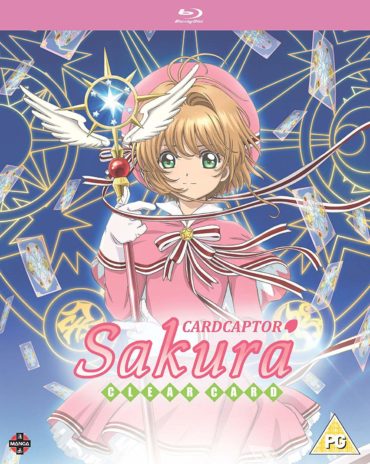Cardcaptor Sakura: Clear Card – Part 2 Review
The first part of Cardcaptor Sakura: Clear Card was a solid starting point for the sequel to such a classic series, filled with the same sense of fun and magic while bringing in a lot of mystery, with several plot threads hanging in the background over the appearance of the Clear Cards, who the mysterious figure in Sakura’s dreams might be and the introduction of Yuna D. Kaito, the butler of Sakura’s new friend, Akiho.
The second part of the series starts largely as it left off, with more new cards to capture, Sakura and Syaoran forever blushing over their relationship like the young kids that they are, and Akiho still competing for best-friend status with Tomoyo as she becomes ever closer to Sakura.
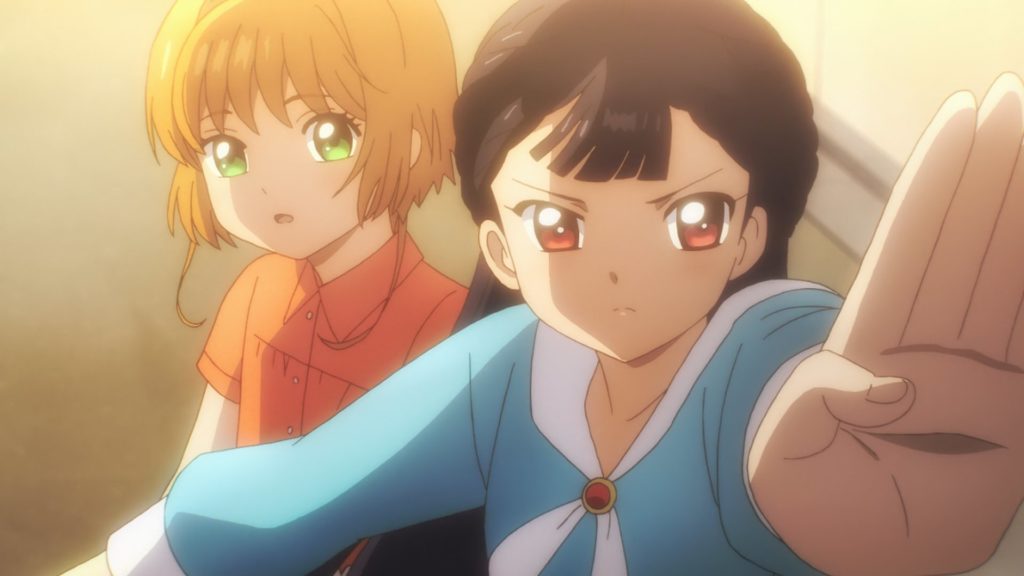
Perhaps the most notable thing for the first few episodes here is the return of Meiling; a mainstay secondary character and Sakura’s rival in the original series. So far she had not been present in Clear Card other than the odd mention, so it’s great to see her finally return, and in some of the best episodes over both parts: featuring in the Mirage card double bill where she slowly turns into a cat, as well as the episode with the Struggle card, which sees Meiling and Sakura pair up in a display of acrobatics and martial arts to defeat a powered-up version of The Twin from the classic series. There’s a lot of focus on showing how she’s transitioned from being a rival in the original to one of Sakura’s closest friends, and it’s nice to see how she’s matured, being the voice of reason in Sakura and Syaoran’s relationship, as well as being able to converse readily in Japanese, Cantonese and English. That said, both she, Syaoran and Akiho are quite the linguists!
While the series gets to have its fun during Meiling’s stay, after she returns to Hong Kong, things start to get serious as the show begins to tie together a lot of the plot threads it was spinning, taking on a darker tone. Again, this very much follows in the spirit of the originals, as the climaxes there do a similar thing, but this time it breaks new ground by having a true villain for the first time. While the original series presented Yue, Clow Reed and Eriol as major challenges to overcome, and perhaps antagonists, they were never villains in that specific sense of the word, so now having someone who actually wants to do Sakura harm sets Clear Card apart where it is not just more of the same.
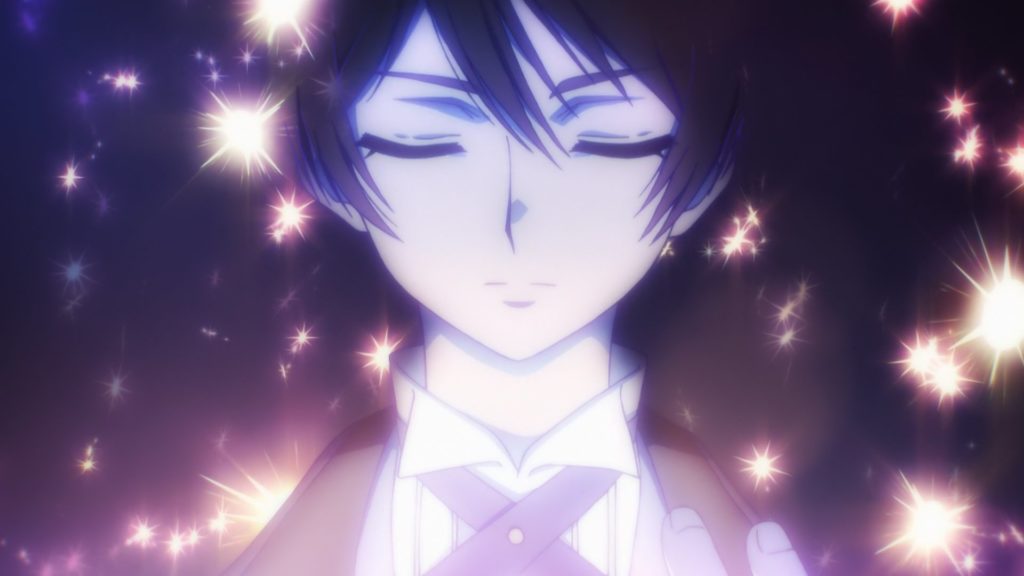
Interestingly, having both watched the anime and read the manga up to this point, the anime is more keen to make a big deal out of this than the manga, with it opting for a slightly different, and I must say better, take on the climax that really feels like it’s the point which everything has been leading up to; while in the manga it feels like a penned concept that isn’t truly realised. While I thought both would match each other by coming out at the same time, it once again appears that the anime version is becoming more “definitive” (the classic series vastly expanded on the original manga, introducing more cards and changing or extending the sequence of events).
With this plot taking centre stage, I must say I found this second part of the series more enjoyable to watch as it has a clearer structure and isn’t just monster-of-the-week. While this definitely strengthens it, the increased focus on the mystery really delivers more of what I wanted from the series, as the parts of the originals I liked the most were the ones that really explored the series’ mythology and the lore behind the magic. This particularly comes into play when the series begins to explain who Kaito is, where his backstory only raises more questions, although it feels like there’s a transition from “who” or “what” to “why”. Yet it keeps up this sense of mystery that has pervaded the entire series so far, and I’m glad we aren’t getting everything too soon.
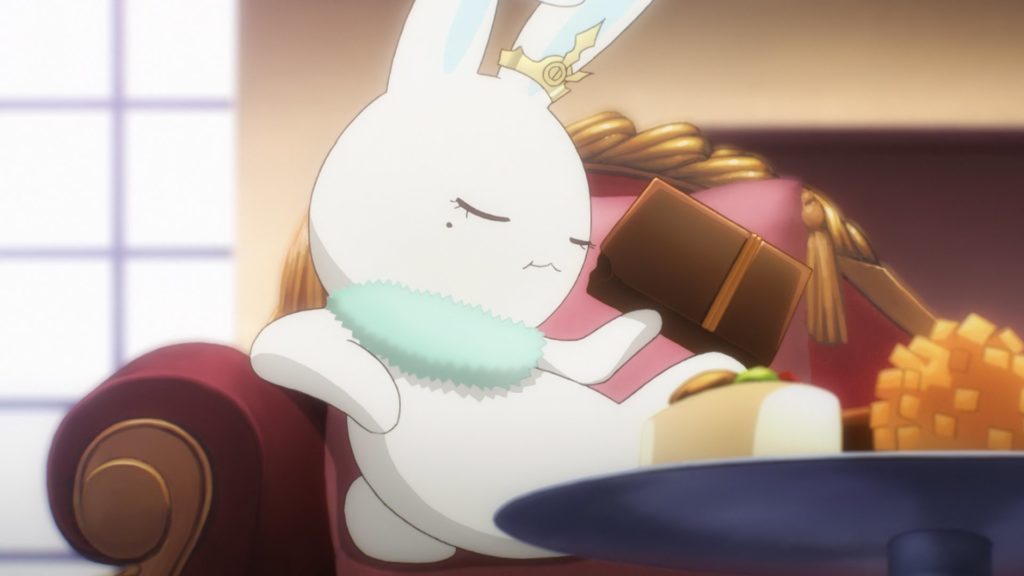
For those who might think this sounds like the series is going too dark, don’t worry, as it still retains its light-heartedness and sense of humour by utilising other members of the cast, with comedian-in-the-making Takashi still telling his tall tales, and Kero still giving us some great moments in his attempts to continuously eat, while he is still hilariously bad at video games. Also chiming in to beat Kero in the adorable mascot stakes is Momo, Akiho’s plush bunny companion, who is effectively the equivalent to Kero or Spinel. Her high class attitude is great to watch, but it’s the gap between seeing this little bunny eat pieces of chocolate that are clearly too big for her that really captures her charm.
There are also some sweeter moments around Sakura’s relationships, with the series not just focusing on her and Syaoran, but also revisiting her feelings over her mother in one of the later episodes that gives us some lovely scenes featuring her as a child. This ties in with one of the other plot lines around Sakura’s ever-increasing magical power, which has many of her friends worrying that it may be becoming too strong for her to handle. Both this and several other episodes poke around at how time magic is the most difficult to use and master; and with Sakura now being able to view the past, there’s a couple of hints that her use of time magic may eventually be her undoing.

While in Part 1 I felt that some of the battles against the cards were too easy, this part takes it up a notch as they definitely feel more challenging and force Sakura to work out a strategy before actually capturing them. While I mentioned Mirage and Struggle as highlights, there’s also a mix of entertaining and tense battles with a roll cake monster, a hailstorm, and the bird spirit of fire. The latter one is definitely the most intense and feels the most like the more memorable fights from the classic series. It’s also great that Syaoran gets involved and helps Sakura out with his mysterious new abilities (I don’t think the anime clearly shows where they are from, but I know the manga definitely covers that specific plot point).
Madhouse’s animation is consistent with the first part and is generally well animated, although I did see the odd set of still frames a couple of times where they could have been fully animated cuts. The episode with the roll cake monster also has a moment that felt slightly off where the more comedic, chibi art style is used for a bit too long. The use of CG for things like the crystal effects, enemy attacks and the gears and mechanisms of the clockwork is still really effective at enhancing how good the show looks and blends well with the 2D animation.
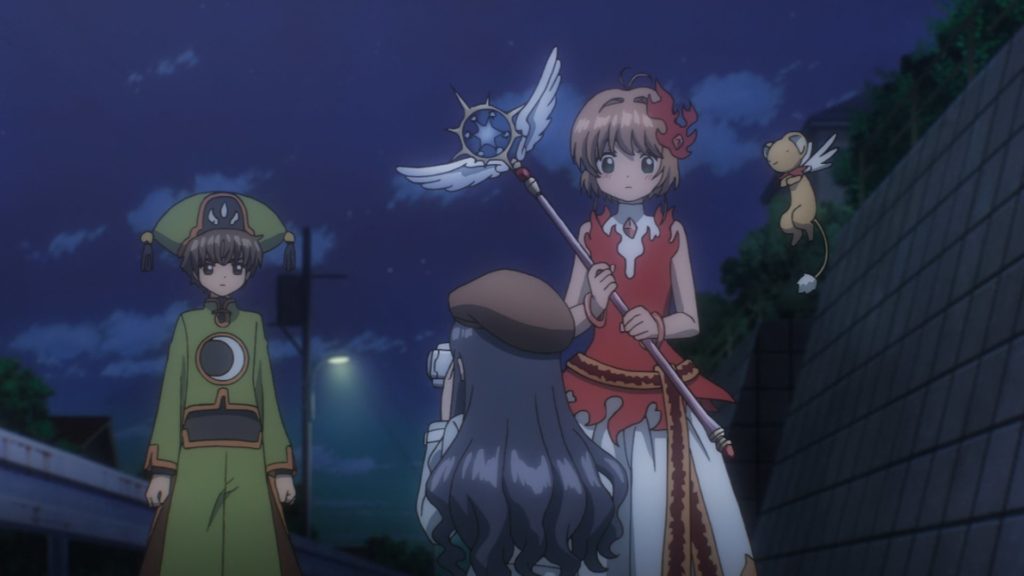
The series’ costume design also continues to be great, with Sakura getting some new cute and cool costumes from Tomoyo, with the Arabian-inspired fire costume being my favourite this time around. It’s not just Sakura’s costumes, though, as all of the clothing in this half feels really well designed and I like that they don’t use the same outfits all the time (other than the school uniforms of course).
Takayuki Negishi’s soundtrack for the series is still as mystical and captivating as ever, and I definitely noticed it standing out more in this second half. I also really like the new opening, “Rocket Beat” by Kiyono Yasuno, while Minori Suzuki’s “Rewind” provides a fitting ending theme.
Manga Entertainment’s release of this second part of the series contains Episodes 12 to 22, with both the original Japanese audio with subtitles and the English dub. While my opinion on the audio hasn’t changed and I would still recommend the Japanese over the English as I feel the voices fit the characters better, although the dub is perfectly serviceable for those who want it. In terms of other extras there’s not much to say of them in this release, with only the creditless opening and closing songs.

The second part of Cardcaptor Sakura: Clear Card takes the strong base that the first part offered and really elevates it to be one of the best parts of the entire franchise. I love the darker, more mysterious tone that the series has, and having a true villain does give it a more unique feel rather than it just capitalising on the classic series’ success. If there was any doubt in my mind that this wouldn’t match up, then that is all gone: Clear Card is a deserving successor to a much-loved legacy and I can’t wait to see where CLAMP takes it next.


